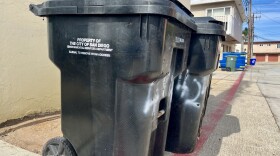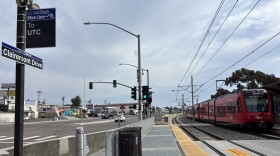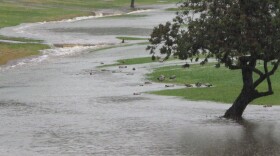Hawaii’s electric utility acknowledged its power lines started a wildfire on Maui but faulted county firefighters for declaring the blaze contained and leaving the scene, only to have a second wildfire break out nearby and become the deadliest in the U.S. in more than a century.
Hawaiian Electric Company released a statement Sunday night in response to Maui County's lawsuit blaming the utility for failing to shut off power despite exceptionally high winds and dry conditions. Hawaiian Electric called that complaint “factually and legally irresponsible,” and said its power lines in West Maui had been de-energized for more than six hours when the second blaze started.
In its statement, the utility addressed the cause for the first time. It said the fire on the morning of Aug. 8 “appears to have been caused by power lines that fell in high winds.” The Associated Press reported Saturday that bare electrical wire that could spark on contact and leaning poles on Maui were the possible cause.
But Hawaiian Electric appeared to blame Maui County for most of the devastation — the fact that the fire appeared to reignite that afternoon and tore through downtown Lahaina, killing at least 115 people and destroying 2,000 structures.
Richard Fried, a Honolulu attorney working as co-counsel on Maui County’s lawsuit, said that if their power lines hadn’t caused the initial fire, “this all would be moot.”
"That’s the biggest problem," Fried said Monday. “They can dance around this all they want. But there’s no explanation for that.”
Videos and images analyzed by AP confirmed that the wires that started the morning fire were among miles of line that the utility left naked to the weather and often-thick foliage, despite a recent push by utilities in other wildfire- and hurricane-prone areas to cover up their lines or bury them.
Compounding the problem is that many of the utility’s 60,000, mostly wooden power poles, which its own documents described as built to “an obsolete 1960s standard,” were leaning and near the end of their projected lifespan. They were nowhere close to meeting a 2002 national standard that key components of Hawaii’s electrical grid be able to withstand 105 mile per hour winds.
As Hurricane Dora passed roughly 500 miles (800 kilometers) south of Hawaii Aug. 8, Lahaina resident Shane Treu heard a utility pole snap next to Lahainaluna Road. He saw a downed power line ignite the grass and called 911 at 6:37 a.m. to report the fire. Small brush fires aren’t unusual for Lahaina, and a drought in the region had left plants, including invasive grasses, dangerously dry. The Maui County Fire Department declared the fire 100% contained by 9:55 a.m. Firefighters then left to attend to other calls.
Hawaiian Electric said its own crews then went to the scene that afternoon to make repairs and did not see fire, smoke or embers. The power to the area was off. Shortly before 3 p.m., those crews saw a small fire in a nearby field and called 911, the utility said.
Residents said the embers from the morning fire had reignited and the fire raced toward downtown Lahaina. Treu’s neighbor Robert Arconado recorded video of it spreading at 3:06 p.m., as large plumes of smoke rise near Lahainaluna Road and are carried downtown by the wind.
Hawaiian Electric is a for-profit, investor-owned, publicly traded utility that serves 95% of Hawaii’s electric customers. CEO Shelee Kimura said there are important lessons to be learned from this tragedy, and resolved to “figure out what we need to do to keep our communities safe as climate issues rapidly intensify here and around the globe.”







